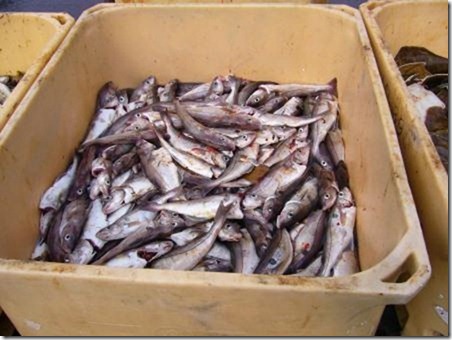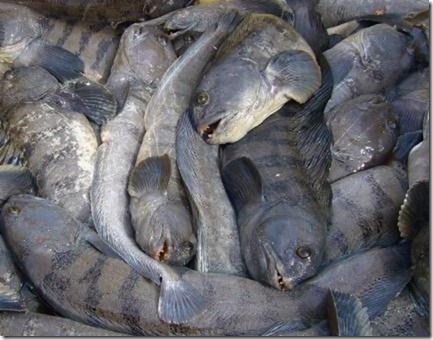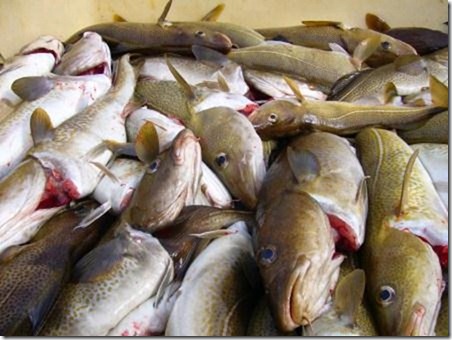Tuesday 12th August, Suðureyri

Awelina of Sweden
James Collier
Tue 12 Aug 2014 23:45
|
The place grows on us. The HM arrived to see us - first time in Iceland –
and told us where we’d be fine to stay and also told us where to find the shop.
This was once again in the garage. I was disappointed that it had no bread, not
even plastic sliced, but on asking the girl replied in perfect English that
she’s just finished baking it.
So breakfast was much improved and we then spent a merry hour or so washing
and Hoovering, so the heads is now festooned with clothes dripping from hangers
but it was rather overdue. After that we walked around until hailed by a young
man who asked us about the boat and volunteered lots that was wrong with the new
edition of the RCC pilot book (not bad considering it was only published in July
2014). After some chat about sailing we asked about the factory tour, but that’s
another error, this time in ‘Lonely Planet’, and the last one of the day started
half an hour ago. But his organisation, and in fact he himself, did tours round
the whole village explaining the economics and the fishery system. We duly
booked to go on the next one and are in fact mightily impressed.
They have created the most eco-friendly and sustainable system they can
devise, and it does seem to work. They are certainly the main employer and this
village is growing unlike it’s neighbours (although some of the growth it has to
be said is from Polish or in the case of our guide, German, workers).
Starting with the fishing boats, they are all small, around 25 – 30 feet
and so operated by just one or two people, and fast (up to 30 knots) so they can
get to the fisheries in 40 mins and all return to port each evening. This means
that they time from fish being caught to being sold (in Grimsby mainly) is only
36 hours, much quicker than the UK trawler fleet manages. The second thing is
that they do no trawling or netting at all; it’s all caught on lines, some
jigged and some baited hooks which means they have almost no by-catch and can be
much more species and size selective. Just as well as the Icelandic have a law
which obliges 100% of fish caught to be brought ashore, as well as quotas and
fines for catching the wrong species or immature fish. A third advantage he
didn’t mention is that the capital investment on boats and equipment is much
lower, maybe 1/20th, that of a trawler so the pressure of loans and mortgages
doesn’t force boats out at sea for long voyages in unsuitable weather. The
accident rate is much reduced anyway and it has almost become a 9-5 job (well,
more like a 6am – 4pm job as far as we can tell).
We were then taken to the factory, albeit not into the main machinery area.
The striking thing is that there's no smell, and no seagulls hanging around.
There’s no discharge at all; they use 100% of the fish.
The best fish goes to market as wet fish either whole or filleted. The
second best fillets get frozen and exported to Britain and Scandinavia to be
used for fish-and-chips. The worse again is turned into fish balls for the US
market, or fish-sticks for the Germans.
An interesting quirk: our guide said that the demand from the UK for Cod
from the fish and chip trade has fallen off dramatically in the last couple of
years and most of the demand is now for Haddock, which is nothing like as
plentiful supply or as sustainably fished. He was mystified, but of course the
explanation is that we’re all told by Fearnley-Whittingstall among others to
avoid Cod as it’s not sustainably fished. Well, that’s true of the way we fish
for it in the North Sea, but since we’ve now fished out our own stocks and get
it from Iceland instead maybe this advice is wrong and/or
counter-productive.
The heads and back-bones with their tiny scraps of flesh left after
filleting are air dried and shipped to Nigeria, where apparently there is a an
eager market paying ready money. Actually we got to taste some, and it’s not at
all bad. The skins are dried and cured to be used to make leather goods, and
remaining stuff, mostly guts we suppose, is used to make animal feed and sold to
Denmark (Peter and I suppose it explains the ‘taste’ of Danepak bacon). A
peculiarity is that the livers all go to France; what do they do with
them / why is France the highest paying market? Pills we surmise. We forgot to
ask the destiny of the tongues and roe.
The place is a stark contrast not only to Vestmanaejar, where the trawlers
are huge and new and company owned, but also to the other villages here in the
Vestfjords which all seem to be dying whereas in this one the population is
growing. We asked why and were told that Þingeyri had simply made bad decisions
about investment, but we rather discount this as local rivalry, not to mention
that the government they heap so much scorn on has built this community a road
tunnel direct to Isafjordur making it an easy all-weather drive whereas the
inhabitants of Þingery have a 2 hour drive on awful roads, which in any case are
blocked by snow or rock falls for 60+ days a year.
Some of the catch today:
 Saithe, aka coal-fish
 Halibut, all rather smaller than we’d expected.
 Wolf fish looking rather forlorn, as well they might
 And Cod; not all caught by Peter
We also saw them landing a small number of Redfish, Skate and Hake.
A very fishy day, but of course you can’t actually buy any; the
Icelandic simply go and catch their own whenever they need, so there’s no local
market at all. Since we’ve been in port all day our pasta this evening was of
irresponsibly fished and unsustainable tinned tuna – shh.
We finally went to a municipal swimming pool – already on winter opening
hours – which is heated by a hot spring. Very nice it was too. Staffed by a
German lady. We have met rather few Icelandics in such positions; the cafés
employ young British or Germans and Poles do the manual labour.
 Awelina lying amongst the small fishing boats, all home by evening.
|